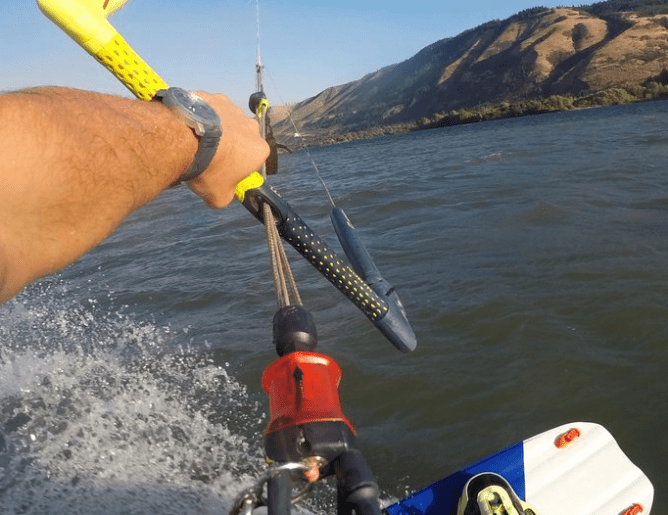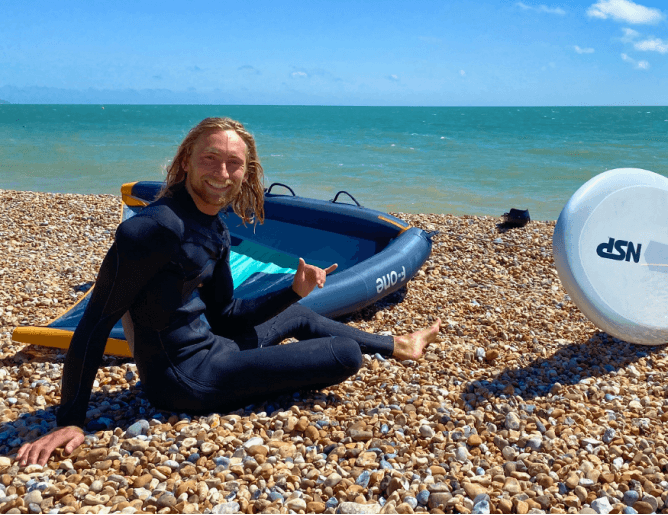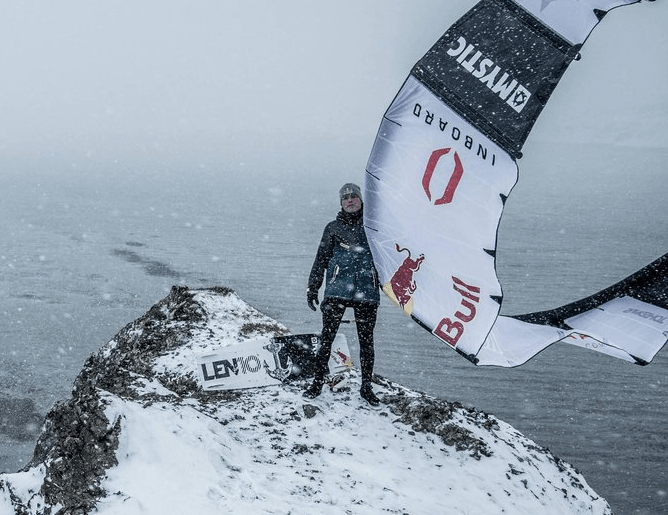Up your kitesurfing game with our beginner’s guide
 1203
1203


Everything you need to know about learning to kitesurf, from choosing an instructor to buying kit.
Kitesurfing has to be one of the coolest sports you can do on water, but how do you get started in the first place? Where can you learn and how long does it take? To find out all about becoming a bona fide kitesurfer, we spoke to UK instructor Luke Denny, and three-time world wave champion and kitesurf coach, Kirsty Jones.
What is kitesurfing?
Kitesurfing is a wind-powered watersport that uses a kite and a board to propel you across the water. Despite the name, it doesn’t have to involve wave surfing – kitesurfing can be done on mirror-flat lagoons, as well as in choppy seas or big waves. All you need is wind and water.
There’s a lot of fun and progression to be had with kitesurfing. Once you've mastered the basics of riding along and staying upwind, you can start going faster, jumping, doing freestyle tricks, riding waves or going on long ‘downwinders’ along the coast.
What skills do you need to get started?
Most beginners are completely new to boardsports, watersports and kite-flying, so lessons start from scratch. “Many have never flown a kite or done another watersport in their life. Some have never even put on a wetsuit,” says Kirsty Jones. For safety reasons, you should be comfortable swimming in open water.
How fit do you need to be?
You don’t need to be super-fit to kitesurf. And the kit is lightweight, so you don’t need lots of muscle strength either. However, a general level of fitness will help you progress faster, give you more stamina on the water and help you avoid injuries.

A decent level of fitness will help with learning to kitesurf
© TOM LEYDEN
Do you need lessons?
Yes. Any kitesurfer who respects the sport will agree that beginner lessons are essential. As well as getting you up and riding as soon as possible, a good instructor will furnish you with essential safety know-how and procedures. Without this knowledge, you’re a danger to yourself and everyone else on the water and beach.
Where can you get lessons?
You can find kitesurf schools and instructors around the globe. Most allow you to book online, and they offer anything from the choice of weekday and weekend lessons and longer packages.
Luke Denny teaching a kitesurfing class in Zanzibar
© KITESURFKINGS.COM
Or if you want full immersion try a kitesurf camp. Kitesurf camps like Heliophora in Dakhla off the coast of west Africa, Dare2Fly in Cabarete in the Dominican Republic, or at a whole host of other camps, based everywhere from Egypt to Brazil, to Sri Lanka and the Caribbean.
How do you choose an instructor or kite school?
“All instructors must have completed a training course with a recognised body (like IKO, BKSA or VDWS),” advises Luke Denny. “But, in my opinion, it’s not good enough to simply go through the syllabi. An instructor with lots of pre- and post-qualification experience is in a better position to coach you safely and successfully. They should also have a real passion for people – without this, they’re unlikely to give you the care, attention and confidence boost that new kiters need. If you’re unsure, ask friends or other kiters for recommendations.”

IKO and BKSA qualified instructor Luke Denny
© KITESURFKINGS.COM
An instructor with lots of pre- and post-qualification experience is in a better position to coach you safely and successfullyLuke Denny
If you’re learning overseas, make sure that you can communicate easily with your instructor. And don’t be afraid to ask about the kit you’ll be using. “Learning with new equipment that’s in excellent condition is ideal, and beginners should always be given suitable flotation vests and helmets. Learning with substandard equipment is not recommended,” Denny says.
What kit do you need for lessons?
Any decent instructor or kiteschool should provide the kit. They’ll have a range of different kites, boards and safety equipment to suit you and a full range of different wind conditions.

Most schools provide you with all the kit you'll need
© DAMIÁN DÁVILA/RED BULL CONTENT POOL
In some cases, you may need your own wetsuit – check with the school first. Sun protection is important, too, especially if you’re learning abroad – consider things like waterproof sun-cream, a rash vest (thin top to protect your arms), a cap and polarised sunglasses.



















 favorize.
favorize.